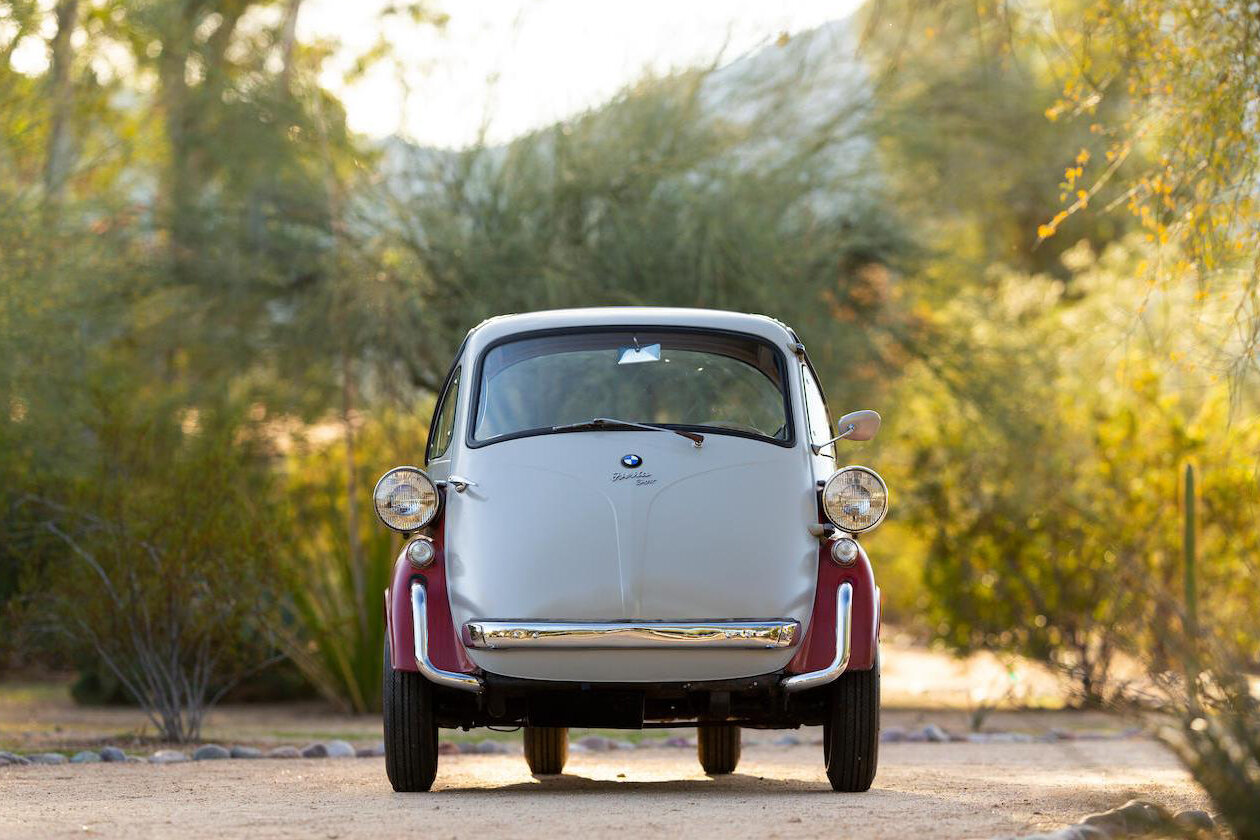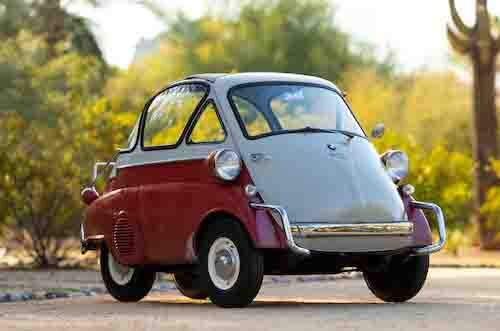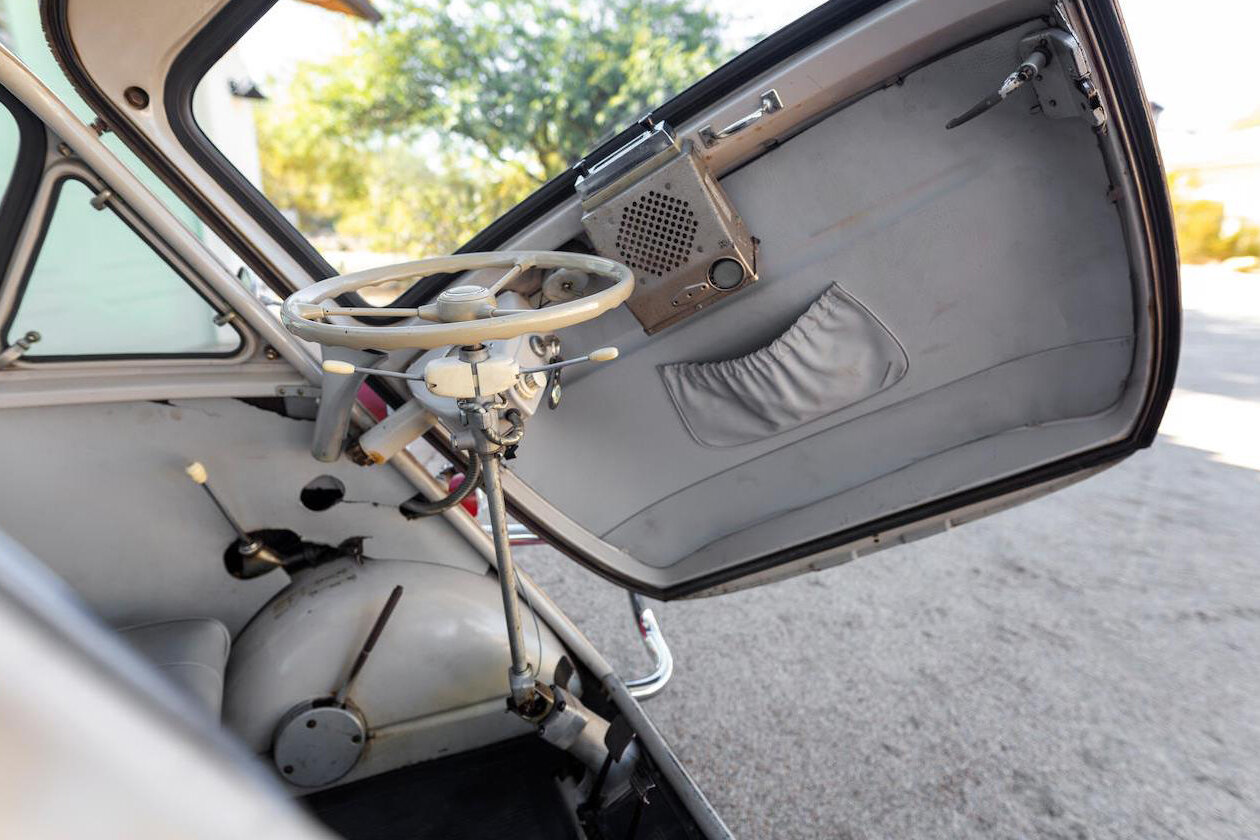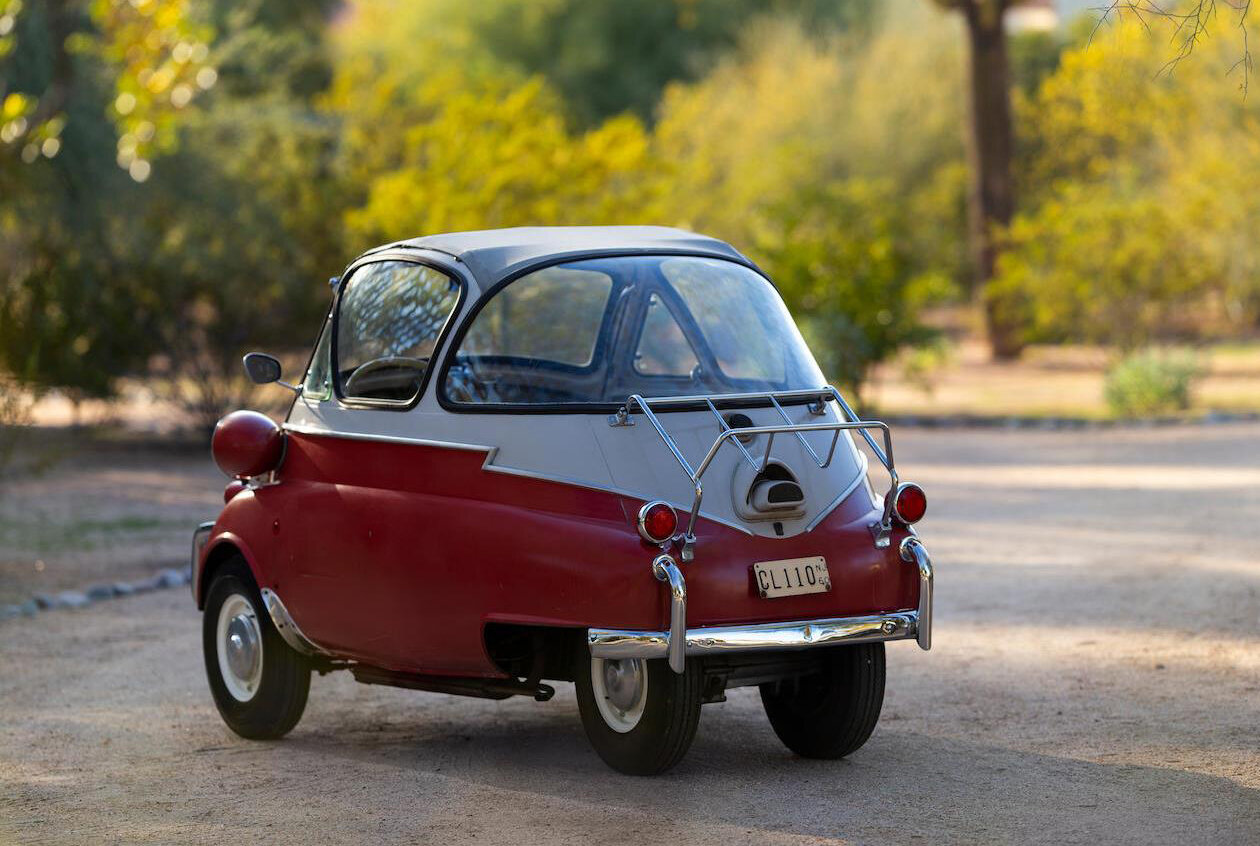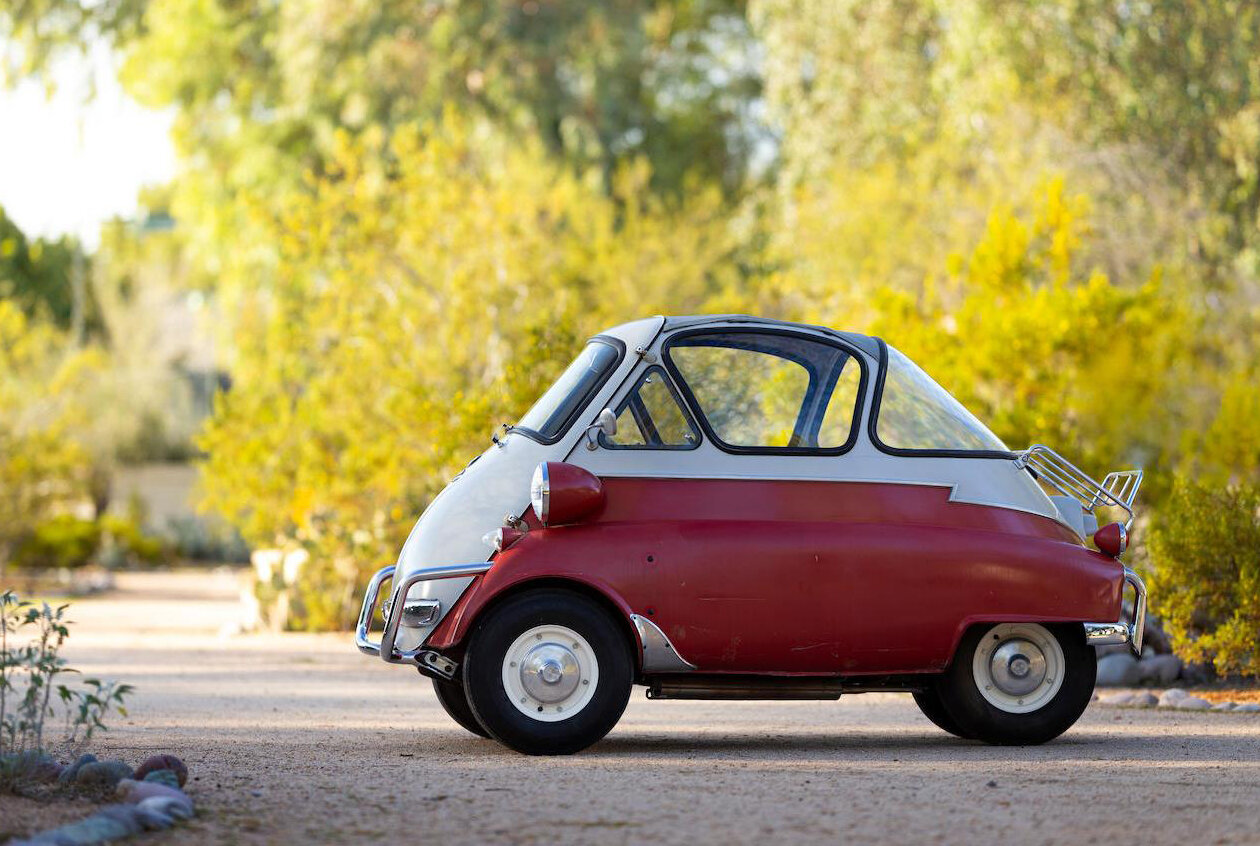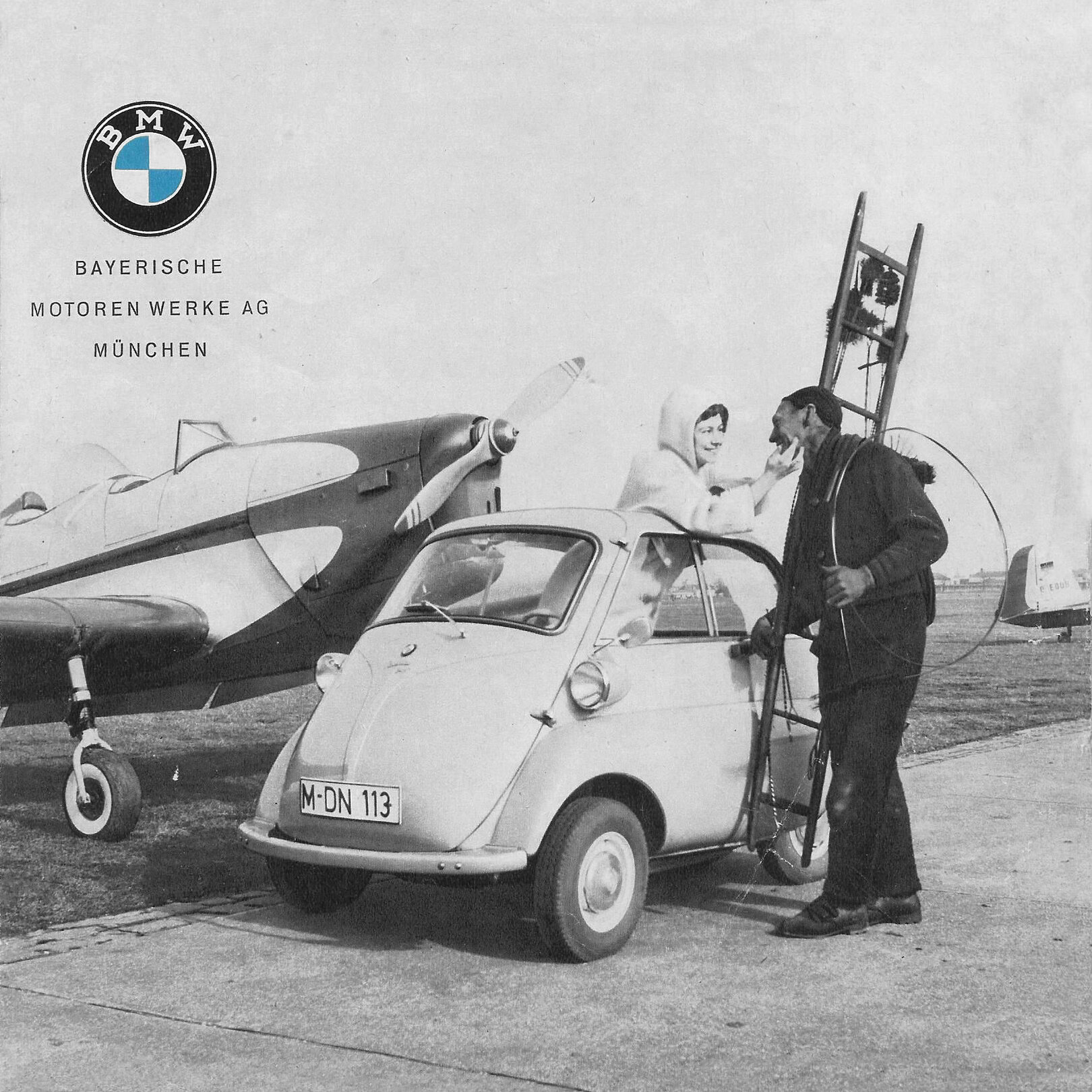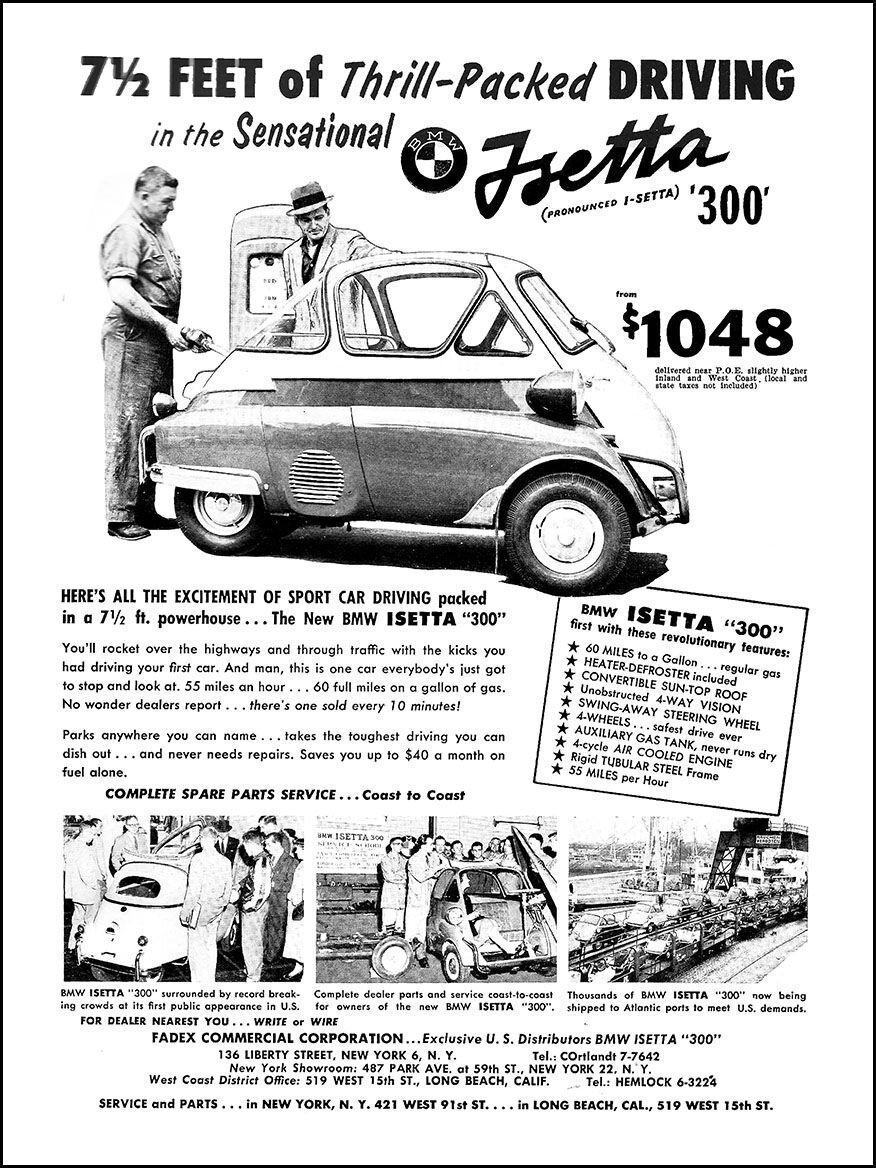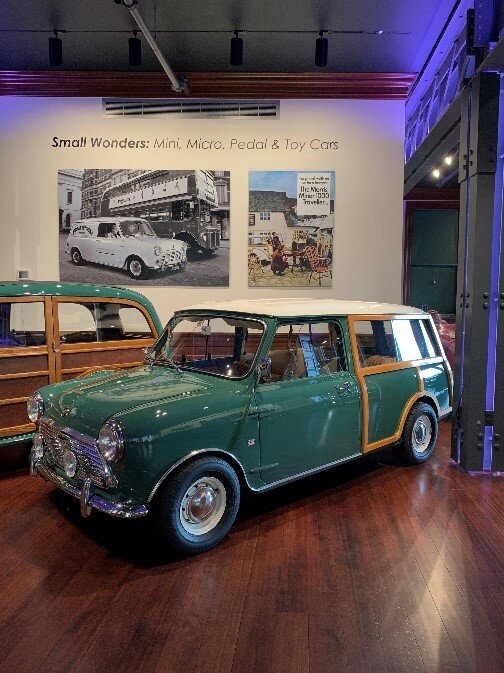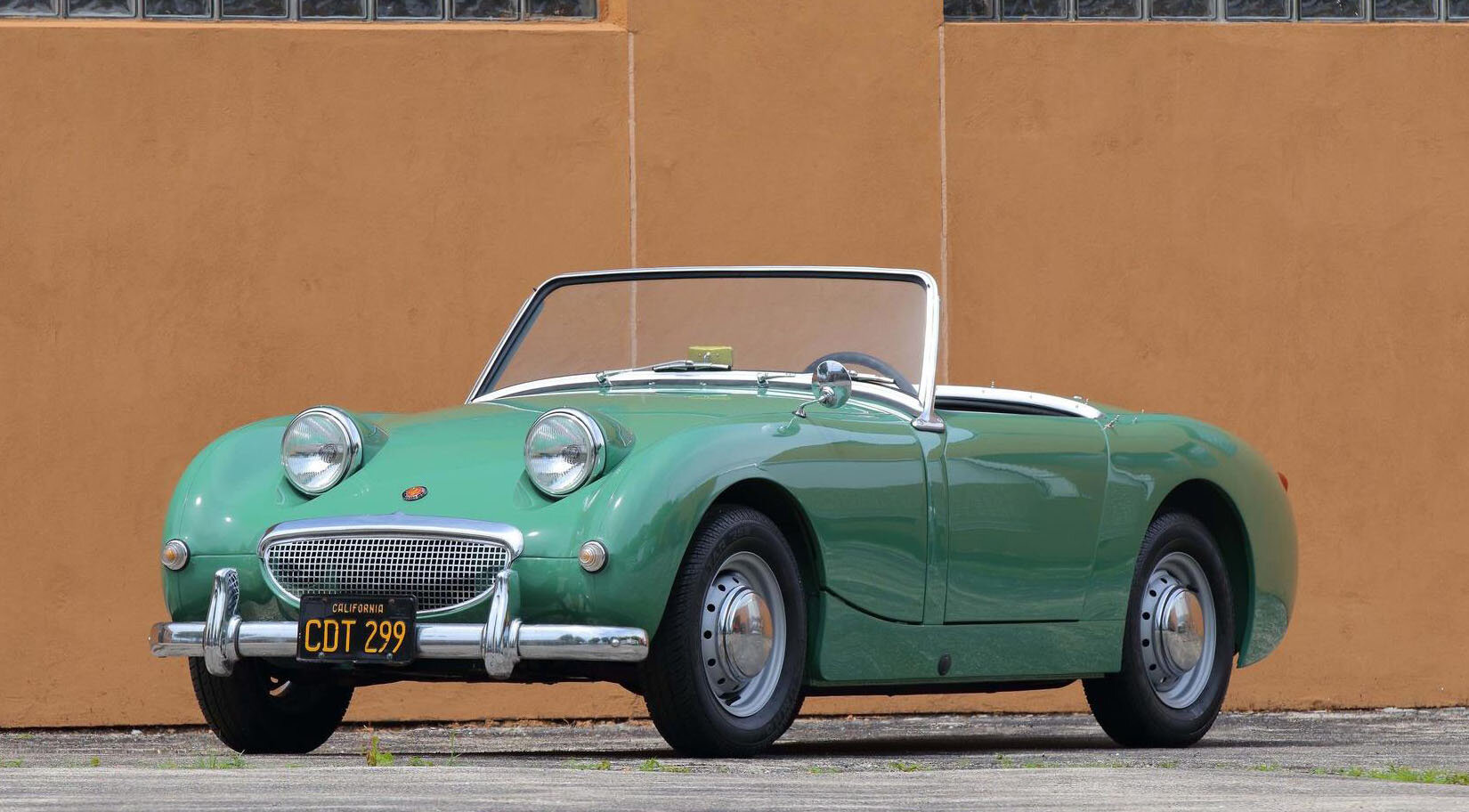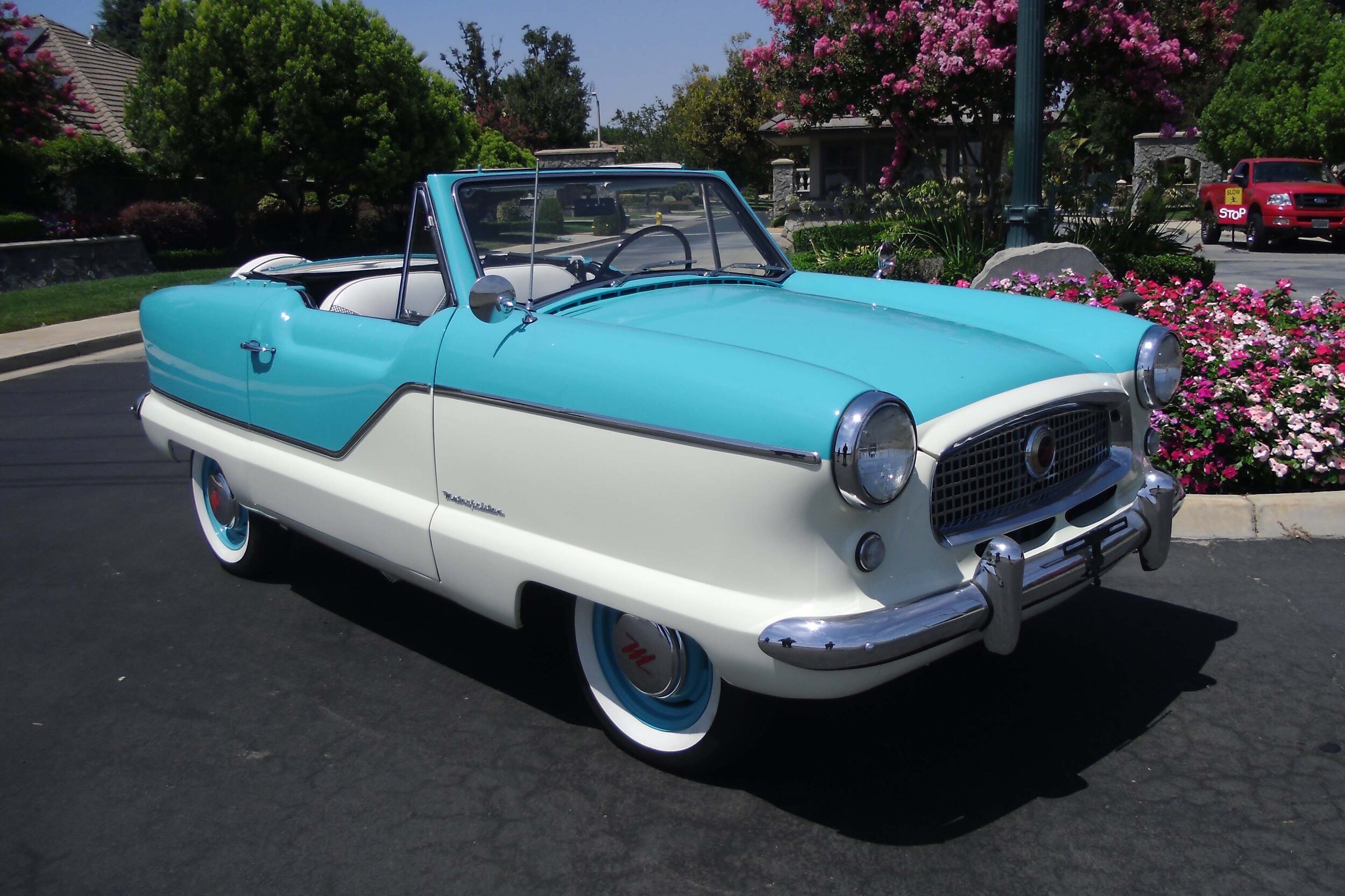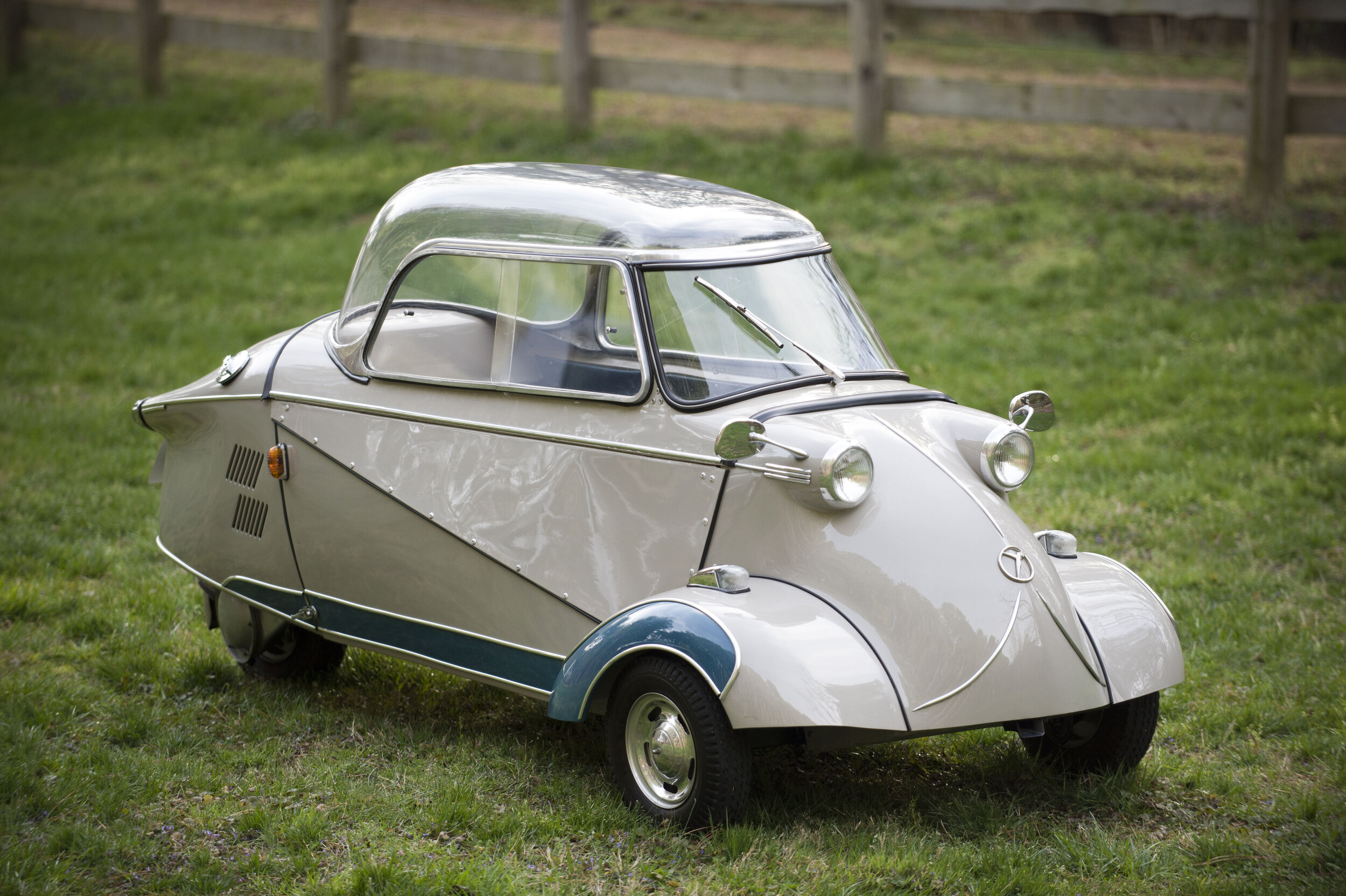1956 BMW Isetta 300
Specifications
Engine: 298cc 1-Cylinder
Horsepower: 13 @ 5,800rpm
Transmission: 4-Speed Manual
Brakes: 4-Wheel Hydraulic Drum Brakes
Suspension: Swing-Arm Front Suspension, Leaf-Spring Rear Suspension
Weight: 778 lbs.
The Isetta shown here is one of the most desirable models produced, due to its Z-bar trim design and larger 298cc engine, which were offered for only one model year. Many aspects of this Isetta are original and it has been well preserved throughout its life. This Isetta retains the original RCA tube radio, luggage rack and front wheel spats, ready for its next trip around town.
BMW was on the edge of bankruptcy in the mid-1950’s – motorcycle production was declining, and the company was not making money on luxury models like the 503 and 507. The company needed a vehicle that could be put into production to make money immediately. The Isetta was BMW’s answer. Designed in Italy to be built under license in countries around the world, the BMW made the Isetta one of the most iconic bubble cars of all time. While the car was built by companies such as Iso in Italy, Romi in Brazil and De Carlo in Argentina, BMW saw the most success with the Isetta selling more than 160,000 of them over a six-year production period.
The Isetta was brought to fruition by the Italian firm Iso, designed by aeronautical engineers Ermenegildo Preti and Pierluigi Raggi. The company had been building various items such as refrigerators, motor scooters and three-wheeled trucks. Iso powered their Isetta with their own two-stroke 236cc motorcycle engine, though BMW redesigned the powerplant, using their four-stroke 247cc motorcycle engine. While the Iso and BMW Isetta’s appeared very similar at first glance, BMW had re-engineered the car to a point that no parts between the Iso and BMW were interchangeable. The original Iso Isetta had just three wheels, though the car was prone to rollovers, which led BMW to add a second rear wheel.
Unlike most other microcars, the Isetta was able to seat two adult passengers next to each other in the front seat. Because the door opens to the front and the steering wheel and column swing with it, it was very easy to get in and out of the Isetta. Luggage mounts onto the rear of the car to save interior space.


